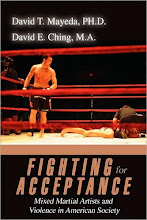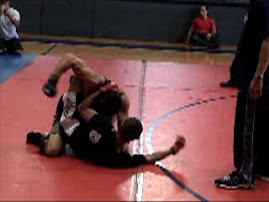 NPR ran a story yesterday on the high levels of youth violence, specifically gun/gang violence, in Chicago ("Youth Killings Reach Crisis Level in Chicago"). From the story:
NPR ran a story yesterday on the high levels of youth violence, specifically gun/gang violence, in Chicago ("Youth Killings Reach Crisis Level in Chicago"). From the story:So far this school year, at least 36 Chicago Public School students have been killed, most of them victims of gunshots. Scores of other Chicago children and teenagers have been wounded in shootings, and there are concerns that the gun violence could escalate when school is out for the summer in a few weeks.
While urban gun violence in Chicago and other cities is nothing new, there is a growing sense among community leaders that it's now at a crisis level.
The story speaks to a few key issues prevalent in the criminology field. Take, for example, this youth’s quote.
Jordan says having his high school years marred by the constant danger of gun violence is leading him to attend college as far "away from the city as possible; that's why I'm going to [go] all the way to the East Coast. I refuse to live my life in fear. "
Jordan plans to attend the Citadel in South Carolina next fall.
"My family is telling me, when I leave, don't come back," he says.
W.J. Wilson’s classic 1997 text, When Work Disappears: The World of the New Urban Poor, discusses how in Chicago’s most impoverished neighborhoods, those families who could afford to leave, did. As crime escalated, educated African American professionals, who once lived in those communities, bolted for the burbs. Thus, Chicago ghettos were left without those role models for the youth and young adults left behind.
In turn, the unemployed and those working in the informal economy became all the more visible for young people. This phenomenon is seen through Jordan’s plans, as another intelligent, motivated, college-bound youth is encouraged to never return to his Chicago community.
The other structural problem presented in this story is the proliferation of guns, which I addressed before, though in a global context. Those interviewed in the NPR story talk about the responses that have been implemented to address this. They do discuss conflict resolution programs being put into practice, which there is nothing wrong with. However, this is still a relatively small-scale response to a macro problem, and therefore, will not likely result in major improvements.
They address other responses (i.e., reactions) being utilized, such as greater police presence.
The Chicago Police Department is targeting those entrenched gangs throughout the city in several ways. One is by what he calls "hardening the terrain," or having officers saturate certain areas such as parks, street corners and alleys that are known for gang activity.
A few concerns manifest from this approach. First, again, it is a reaction-based intervention, and thus, will not fix root issues. A positive that can develop from increased police presence is that some communities with high crime rates do not feel that they can move forward with crime prevention programming until criminal elements have been removed from their neighborhoods.
Unfortunately, what tends to happen more frequently with increased police presence is greater tension between the police and neighborhood residents. In addition, more arrests in these communities contribute further to the already disproportionately high number of poor, young men of color in the criminal and juvenile justice systems, largely for non-violent crimes.
As California has learned, prison over-crowding is also a major factor that contributes to state debt and a cutback in social services (e.g., education, health care), making the unintended rippling effects of amplified police enforcement quite harmful.
The one structural area that the story does address in the form of prevention is gun control (the audio file does not cover this part).
Complex problems require complex solutions," says Simeon senior Ronnie Mosley. "I think, you know, we have to kind of be radical in our approaches."
Mosley, who will attend Morehouse College in Atlanta in the fall, has led rallies and marches against gun violence with his classmates. He and other students have traveled to the Illinois State Capitol to push for an assault weapons ban, a state limit of one handgun purchase a month, and other "common-sense gun laws" — none of which has passed.
Since President Obama has pushed for increased gun control, there has been increased public sentiment for the individual right to bear arms. Recent research, however, has shown that the easier it is to obtain a gun in one’s community, the more likely homicide rates increase, and that the ease with which people can obtain guns is greater in minority communities (Shenassa, Daskalakis, & Buka, 2006).
Other research has shown that “Licensed dealers who kept no records or falsified records were the preferred source of supply for street gun merchants” (Wachtel, 1998, p. 232) and that while the number of licensed gun dealers who are corrupt is low, corrupt dealers still account for a huge portion of guns illegally trafficked and used in crimes. An example described from this study:
In a notable diversion involving 1,200 guns, a savvy vendor bypassed retail sources by using a forged Federal firearms license to buy guns directly from an unwitting distributor. After obliterating most of the serial numbers, the trafficker resold the guns to three other unlicensed peddlers in bulk quantities (p. 232).
Dealer corruption emerged as a surprisingly significant source of supply. Gun tracing disposed that some retailers had not only failed to account for incoming guns but also ignored State registration requirements. Malfeasance licensees was particularly evident in the casework, as 71 percent (13,667) of the diverted guns passed through 15 licensed dealers who made unrecorded or misrecorded sales to individuals and unlicensed vendors (p. 234).
In addition, the study notes that citizens without criminal records can easily purchase guns from vendors and then re-sell them or give them to others – what they refer to as a straw purchase. Also significant was theft from gun distributors. In these cases, the gun venders are not at fault, but the ease with which guns can be obtained (either through surrogate purchasing or theft) is obvious.
Increasing gun control through intensified background checks, not having gun retailers located in commercial sectors, and maintaining better oversight of retailers would not necessarily stop conflict between youth, but it would certainly mitigate the lethality.
The other key issue not addressed in the piece was gender. How many of the assailants and victims were males? Over 90%? Concerns over violent masculinity must be addressed as it relates to homicide and other violent crimes.
Citation:
Wachtel, J. (1998). Sources of crime guns in Los Angeles, California. Policing: An International Journal of Police Strategies and Management, 21 (2), 220-239.
See also:
http://chrisuggen.blogspot.com/2009/05/8-million-firearm-background-checks-in.html










"Mexico cartels go bargain gun shopping in Houston"
ReplyDeletehttp://www.reuters.com/article/domesticNews/idUSTRE54S04A20090529
"Violence Grips Chicago, Takes Young Lives" from NPR's "Tell Me More" (5/19/09)
ReplyDeletehttp://www.npr.org/templates/story/story.php?storyId=104291825
omgizzles, dis is so, so sad that it has come to this, killing your own friends, this is just wrong, wrong, wrong, the people that did this will be punished for their actions because why would you want to kill someoene that you know at your school? it is just wrong.
ReplyDeleteI hope they all BURN IN HELL !!
ReplyDelete